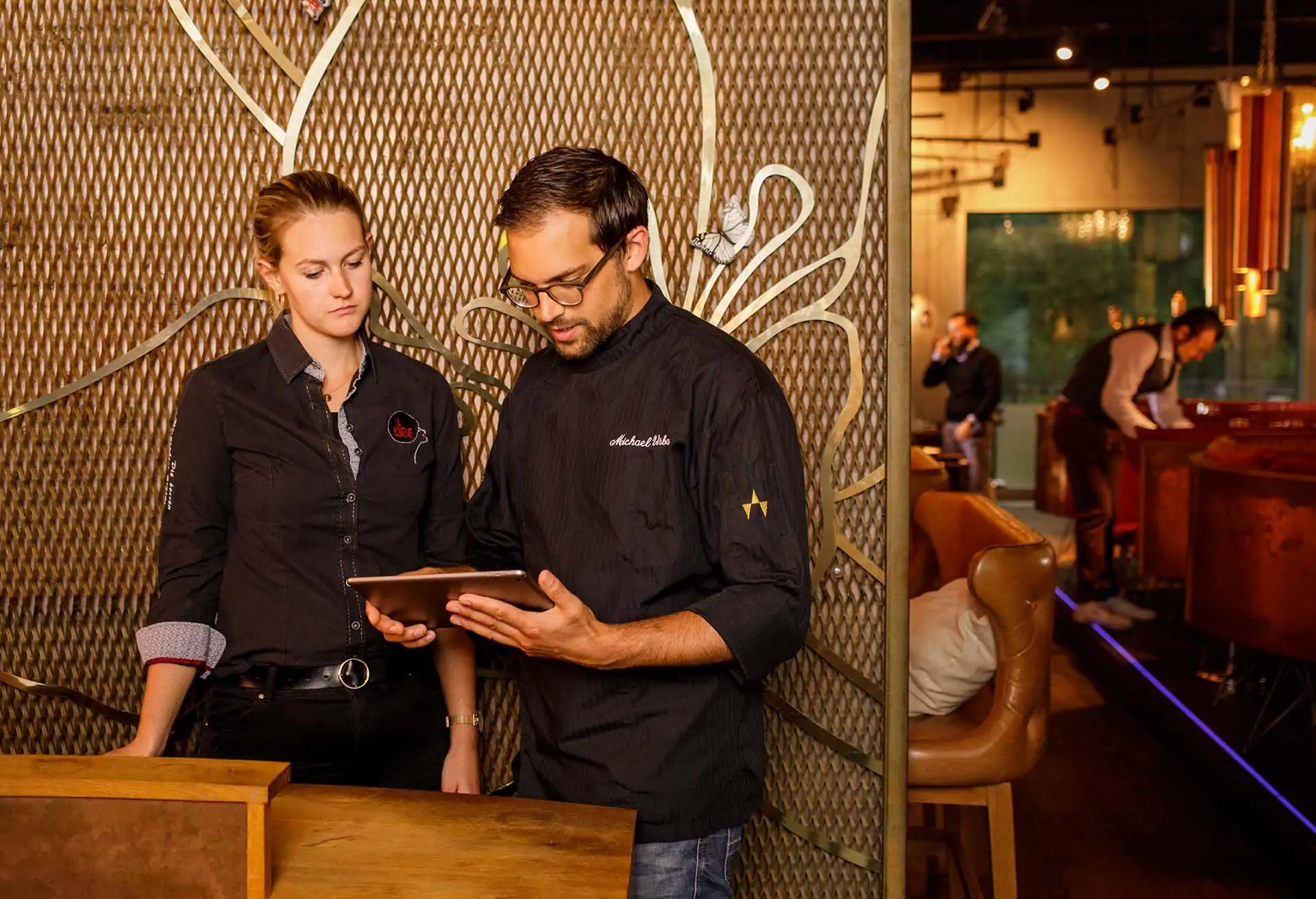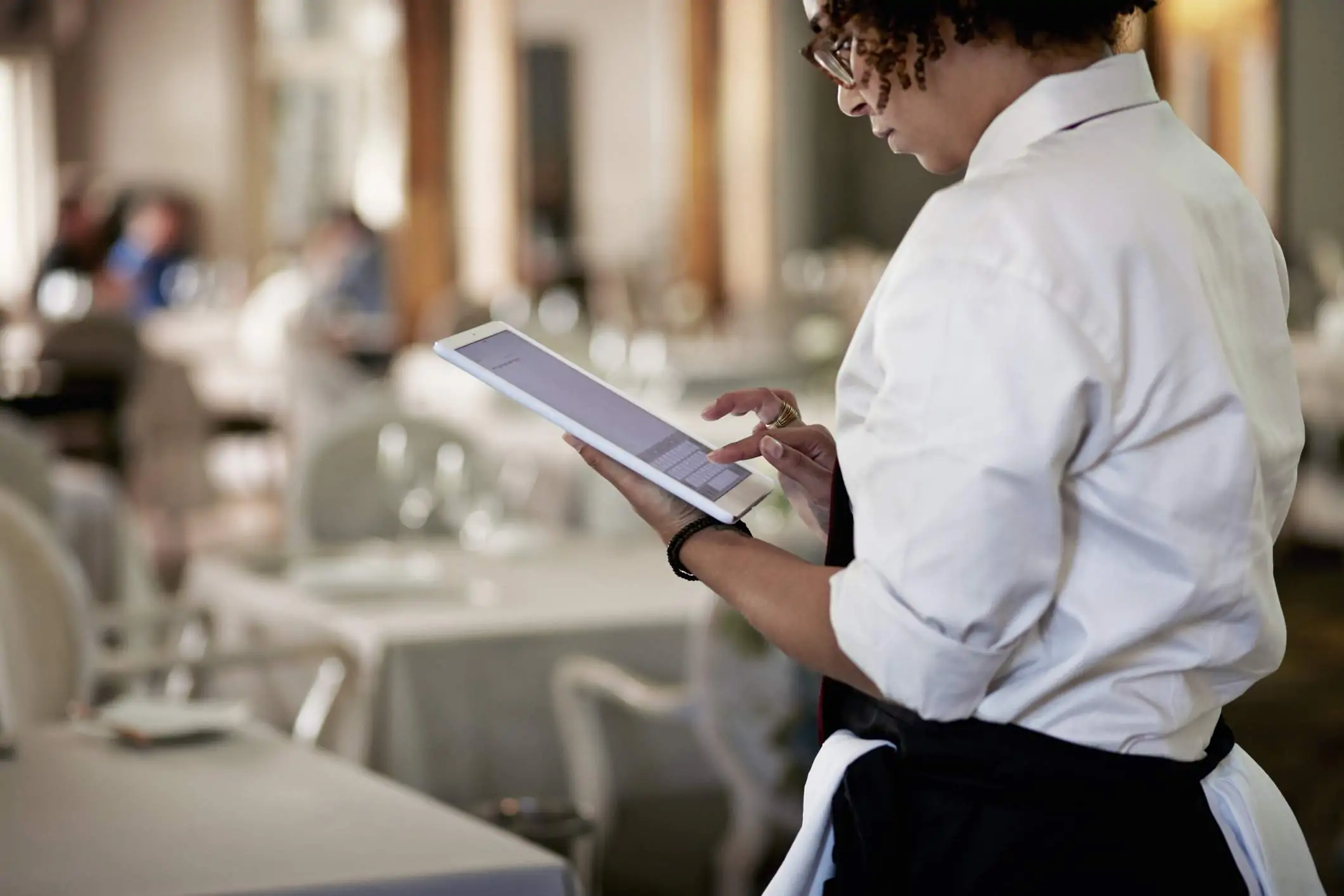When it comes to payments, the more convenient and seamless the experience for guests, the better. That’s why restaurants are increasingly adopting contactless payment systems. Contactless technology provides faster and easier ways to pay and can be a win-win for both guests and restaurants.
Here’s what you need to know about contactless payment systems and how this technology can help your restaurant.
What are contactless payment systems?
A contactless payment system is any type of digital ordering and payment method that doesn’t require direct physical contact between a payment device and the point of sale terminal. This includes payment via credit cards, debit cards, other payment cards, smartphones, watches, and wearable devices. It also includes payment through near-field communication (NFC), the technology behind Google Pay and similar apps.
Why have contactless payment systems in restaurants?
The goal of contactless payment systems is to make operations more efficient and improve the customer experience at the same time. While cash is still the preferred payment method for some restaurants, the use of cash is rarely the first choice for guests. They often prefer contactless payment methods. Cash is also less secure than non-cash payments.
Credit cards, on the other hand, are faster and more secure than cash. Traditional credit card processing demands the attention of a waiter or bartender who has to take the card away to be processed by the POS system. This isn’t efficient and can result in guest frustrations and slower turn times.
However, with a contactless payment system, some steps in the payment process can be skipped. People can simply place their card or smartphone near the payment terminal without having to remove it from their wallet. This way, they won’t have to wait as long to get their card back. And the front of the house team spends less time running credit cards and checks back and forth between tables and POS stations.
How do contactless payments work in restaurants?
When using a contactless payment system in a restaurant, the guest taps their payment device against the payment terminal. This initiates a radio-frequency identification (RFID) signal which is picked up by the payment terminal. The payment terminal then sends the necessary information to the payment network. Then, the payment network immediately sends the approval back to the restaurant’s payment terminal. Once the payment has been approved, the payment terminal will emit a sound signal, usually a beep, confirming that the payment has been completed. The whole process is completed in seconds.
What are mobile wallets?
A mobile wallet is an app that allows people to store credit or debit card details as well as store coupons, loyalty points, and other rewards. The smartphone app can be used at any restaurant or retail store by simply tapping the phone against the payment terminal. Each mobile wallet has a unique identifier that communicates with the payment terminal using near-field communication technology.
In Australia, mobile wallets are a popular contactless payment method. The Reserve Bank of Australia estimates that in March 2022 a quarter of all bank card transactions were made via a mobile wallet.The number is set to grow so it’s important for restaurant business owners to keep up to date with tech trends.
Contactless payment system benefits for restaurants
There are many possible upsides to using a contactless payment system, but these are the three major ones:
Speed
Contactless payment systems are significantly faster than traditional payment methods such as cash, or credit cards. There’s no waiting to get or sign a credit card receipt.
Convenience
Unlike traditional credit card payment processing, contactless payment systems eliminate the need for guests to take their cards out of their wallets. This makes payment easy. Guests can enjoy the speed and convenience of paying right at the table. They simply tap and go.
Security
With contactless payment systems, guests don’t have to disclose their full credit card details. This is because the payment networks communicate the necessary information that is unique to each payment card. In other words, the payment network only has access to the data that is necessary for them to complete the contactless transaction. Therefore, the payment network does not know a guest’s full name, address or any other personal information.
Contactless payment system drawbacks for restaurants
There are few downsides to adopting a contactless payment system, but the major one is a big consideration for restaurants.
Increased transaction cost
These costs can be significantly higher when compared to some other payment methods. Credit card companies charge a fee each time a transaction is made using a credit card. This fee is known as a merchant fee. When using contactless payment systems, it is estimated that these fees range between 0.5% and 1.5% for every transaction. These fees can add up for a small business.
What are Google Pay, Apple Pay, and Samsung Pay?
Google Pay, Apple Pay, and Samsung Pay are all contactless payment systems. These payment systems allow guests to pay for goods and services using a smartphone. As with other contactless payment options, guests simply open the app on a mobile device and hold the phone close to the payment terminal.
These payment systems can be used in a variety of different locations, including restaurants. The best thing about these payment systems is that they are compatible with almost all POS systems. This makes them a suitable option for restaurants that want to implement a contactless payment system.
Is investing in a contactless payment system worth it?
If you’re considering implementing a contactless payment system in your restaurant, you should know that there are costs associated with this decision. You’ll need to decide if the benefits of faster turn times, increased covers, and a more convenient guest experience outweigh the costs. Many restaurants will decide it’s worth it.





